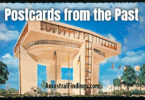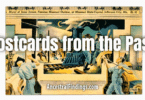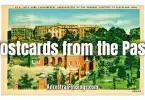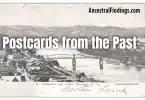Every city has a spot that feels like its true center, the place where people gather and memories are made. For Cincinnati, that place has always been Fountain Square. It’s where families have met up for generations, where kids toss coins into the water, and where people pause for a moment to take in the rhythm of the city. This old postcard brings that feeling back, showing the Tyler Davidson Fountain—better known as the Genius of Water—standing tall in the middle of downtown.
The fountain itself has a story worth telling. It was dedicated in 1871, a gift from Henry Probasco to honor his brother-in-law and business partner, Tyler Davidson. Probasco wanted something that would inspire people and also give Cincinnati a landmark to be proud of. He had it cast in Munich, Germany, and when it was unveiled, the whole city turned out to see it. At 43 feet tall, with water flowing from outstretched hands and sculpted figures showing how water gives life, it became Cincinnati’s signature symbol. To this day, if you ask someone about Cincinnati, chances are they’ll mention the fountain.
The postcard, probably printed in the 1940s, shows more than just the fountain—it captures the energy of a city in its prime. Look closely and you see tall office buildings towering behind the square, cars with rounded fenders lining the curb, shop signs hanging over sidewalks, and the glow of a theater marquee inviting people inside. You can almost hear the hum of traffic, the clang of a streetcar bell, and the chatter of people passing by. The air would have carried the smell of roasted peanuts from sidewalk vendors, maybe fresh bread drifting from a nearby bakery, mixed with the faint mist of water spraying from the fountain itself. It was a place that truly felt alive.
Getting to Fountain Square in those days was an event. Families might ride the streetcar into downtown, dressed a little nicer than usual because a trip to the city was something special. Others drove in, parked their cars, and spent the day visiting department stores, catching a movie, and stopping by the fountain before heading home. Everyone seemed to pass through the square at some point. That’s part of what makes postcards like this so meaningful—they don’t just freeze an image of a fountain, they capture the heartbeat of daily life in Cincinnati.
For me, postcards like this stir more than curiosity—they bring back my own memories. I remember visiting Fountain Square with my parents when I was young, staring up at the fountain, feeling small among the tall buildings, and listening to the water splash down into the basin. Years later, I took my own kids there, and as they leaned over to toss in coins, I thought about how my parents had stood with me in the very same spot. It’s a reminder of how certain places become threads in our family stories, tying generations together.
Over time, Fountain Square has changed with the city around it. The square has been redesigned more than once, but the fountain has always remained its centerpiece. It has seen concerts, rallies, holiday ice-skating, political speeches, summer festivals, and celebrations after big sports wins. Through it all, the Genius of Water has kept watch, a constant presence as the city has grown and changed.
For those of us who love family history, this postcard is more than just a pretty picture. It tells us about a place our parents, grandparents, or great-grandparents might have known well. They may have walked these same streets, leaned against the fountain, or scribbled a quick note on the back of a postcard just like this one before mailing it off. It’s a small piece of paper, but it carries the weight of real lives lived and moments shared.
When I look at this postcard today, I don’t just see a fountain. I see Cincinnati’s story—the sights, sounds, and even the smells of a city in motion. Fountain Square has always been more than stone and bronze. It’s the stage where everyday life unfolded, the place where memories were made, and the heart of a city that continues to bring people together.






